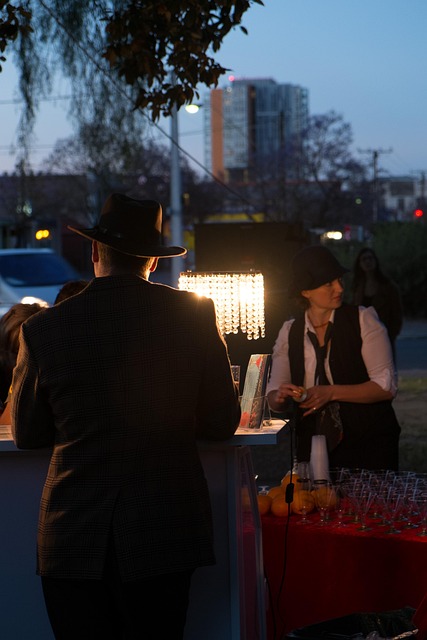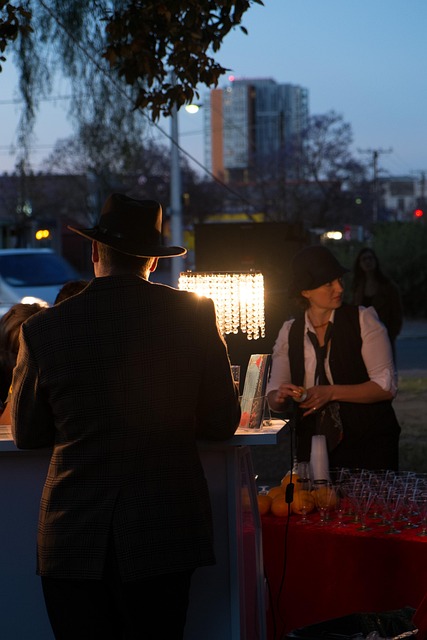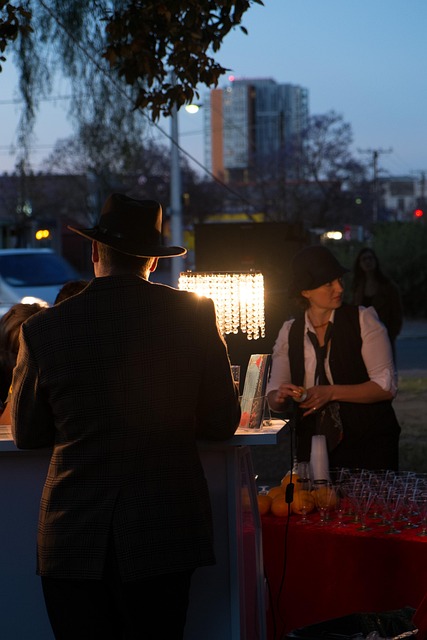From 1920 to 1933, Lane County, Oregon emerged as a key player in the Prohibition era due to its strategic location and challenging terrain. The county's response was a mix of defiance and conformity: some engaged in bootlegging, while others embraced dry years with community events and homemade alternatives. This period left an indelible mark on the county's history, fostering a resilient culture shaped by contrabanding challenges and close-knit community spirit. Law enforcement faced difficulties enforcing the ban due to clandestine distilleries and innovative bootlegger tactics, but the era significantly transformed Lane County's social dynamics, economic landscape, and political climate. Today, its Prohibition-era history serves as a lesson in balancing personal liberties and societal well-being.
“Lane County, Oregon, during the Prohibition era, witnessed a dramatic shift in social dynamics and local history. This article delves into the historical context of the 1920s, exploring how the ‘dry’ movement influenced the county’s social and political climate. From law enforcement struggles to cope with illicit spirits to the everyday life impact on communities, we reflect on the era’s legacy. By examining Lane County’s Prohibition past, we gain valuable insights into a pivotal period that continues to shape local narratives.”
- Historical Context: Lane County During the Prohibition Era
- Social and Political Climate: The Rise of Prohibition in Oregon
- Law Enforcement Challenges: Coping with Illicit Spirits in Lane County
- Everyday Life Impact: How Prohibition Shaped Local Communities
- Legacy and Lessons: Reflecting on Lane County's Prohibition Past
Historical Context: Lane County During the Prohibition Era

During the Prohibition era, Lane County, Oregon found itself at the intersection of illicit trade and local resilience. From 1920 to 1933, when the 18th Amendment banned the production, sale, and transportation of alcoholic beverages across the nation, this rural county became a hub for bootleggers navigating the mountainous terrain to deliver contraband from nearby states. The rugged landscapes provided both challenges and opportunities for those looking to flout the law, creating a complex web of secret distilleries, speakeasies, and underground tunnels.
Despite the federal prohibition, Lane County’s social fabric was characterized by a blend of defiance and conformity. While some residents actively participated in the underground economy, others embraced the dry years with a newfound focus on community events and home-brewed alternatives. This era left an indelible mark on the county’s history, shaping not only its cultural landscape but also its enduring spirit of resilience and adaptability.
Social and Political Climate: The Rise of Prohibition in Oregon

In the early 20th century, Lane County, Oregon found itself at the epicenter of a significant social and political shift that would forever alter its landscape—the Prohibition era. The rise of this movement was driven by a growing desire to combat the widespread availability and consumption of alcohol, particularly in urban areas. As nationwide debates raged on, local communities in Lane County took center stage, becoming a microcosm of the larger struggle between personal freedom and societal control.
The state’s dry laws, which had been in place since the late 1800s, were strengthened during this period, reflecting a changing attitude towards alcohol. Lane County, with its vibrant cities like Eugene and Springfield, witnessed a stark divide as passions ran high. Proponents argued for the moral benefits of a sober society, while opponents feared government overreach and the potential negative economic impacts on businesses that relied on alcohol sales. This tension set the stage for a dramatic transformation in the social dynamics and political climate of the region during the Prohibition era.
Law Enforcement Challenges: Coping with Illicit Spirits in Lane County

During the prohibition era in Lane County, Oregon, law enforcement faced significant challenges in enforcing the ban on alcoholic beverages. The absence of regulated liquor sales created a thriving underground market where illicit spirits were produced and distributed, often with the aid of clandestine distilleries hidden within the county’s lush landscapes. This made it difficult for authorities to track and disrupt these operations due to their remote locations.
Local law enforcement had limited resources and training, making it challenging to keep up with the evolving tactics employed by bootleggers. The use of speed boats on the Oregon Coast and underground tunnels in urban areas further complicated matters. Illicit spirits were smuggled into the county from neighboring states, exacerbating the problem. Despite these challenges, proactive law enforcement efforts, often with assistance from citizens, managed to seize illegal stock and close down some distilleries, but the constant cat-and-mouse nature of the pursuit kept the prohibitionist dream from fully realizing its intended effects in Lane County.
Everyday Life Impact: How Prohibition Shaped Local Communities

In the prohibition era, Lane County Oregon experienced significant shifts in everyday life as a result of the ban on alcohol sales. Local communities were forced to adapt, leading to the emergence of a unique underground economy centered around bootlegging and speakeasies. Many businesses had to pivot, offering non-alcoholic alternatives and creative solutions to sustain their customer base.
The impact extended beyond economic changes; social dynamics also underwent transformations. Neighborhoods became more vigilant, with residents watching for signs of illegal activity. The absence of bars and taverns altered social interactions, as people gathered in private homes or secret locations for gatherings, creating a sense of camaraderie among those who defied the law. This era left indelible marks on the social fabric of Lane County, shaping relationships and community bonds in unexpected ways.
Legacy and Lessons: Reflecting on Lane County's Prohibition Past

Lane County, Oregon’s history during the Prohibition era offers a fascinating glimpse into the past and leaves an enduring legacy. The years between 1920 and 1933 were marked by stringent alcohol prohibition laws, shaping the social fabric of the region. Today, these historical reflections provide valuable lessons about community resilience and the power of collective action.
The Prohibition era in Lane County saw a unique blend of enforcement efforts and local resistance. Speakeasies flourished underground, reflecting a desire for personal freedom and social interaction. However, this period also brought to light the community’s commitment to upholding the law, with numerous individuals risking their own safety to report illegal activities. This complex legacy teaches us about the delicate balance between individual rights and societal well-being. It underscores the importance of understanding historical contexts to navigate modern challenges related to regulation and personal liberties.
